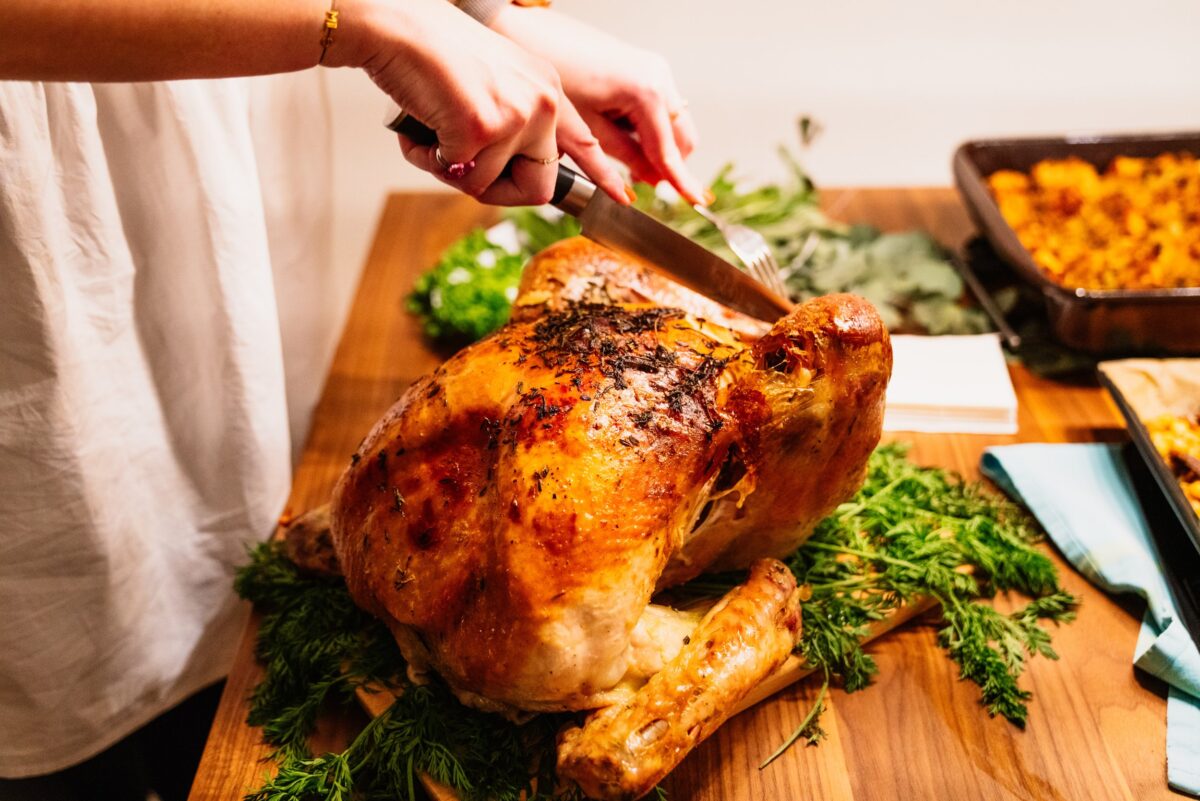One of my favorite parts of writing Meltdown was connecting it to the everyday.
Your Thanksgiving dinner has more in common with the most serious nuclear accident in U.S. history than you realize.
In 1979 at the Three Mile Island nuclear power plant in Pennsylvania, a malfunctioning valve kicked off a chain of catastrophic events, resulting in a partial meltdown of one of the plant’s reactors. Yale sociologist Charles Perrow studied the Three Mile Island meltdown and other large-scale disasters in his book Normal Accidents, and concluded that “interactive complexity” (the number of system interrelationships) and “tight coupling” (the degree to which initial failures impact other parts of the system) are major contributors to system failures. His insights changed how we think about safety and risk.
In our book, Meltdown, András Tilcsik and I extend Perrow’s thought-provoking framework to other areas of our lives, including business, social media, and air travel, to explore how we can design better systems, make our teams more productive, and transform how we make decisions at work and at home. The modern world is increasingly complex and interconnected. Let’s extend Perrow’s thought-provoking framework and connect it to one of America’s most treasured national holidays: Thanksgiving.
We don’t usually think of Thanksgiving dinner as a system. It seems about as far from a nuclear power plant as you can get, but Perrow’s ideas still apply.
First, there’s the travel: the days before and after the holiday are some of the busiest travel days in the year. In the United States, Thanksgiving is always the fourth Thursday in November; in Perrow’s terms, that means there’s little slack—there’s only a one-day window for the holiday. The massive amount of travel also creates complex interactions: cars on the roads create gridlock, and the network structure of air travel means that bad weather at a major hub—like Chicago, New York, or Atlanta—can cause a ripple effect that strands travelers around the country. To make matters worse, even as travel resumes to pre-pandemic levels, COVID is already straining the capacity of airlines and their workers to keep up. Last month, for example, Southwest Airlines canceled two thousand flights.
Then there’s the dinner itself. Many houses have only one oven, so the classic roasted or baked Thanksgiving dishes—the turkey, casseroles, and pies—are linked. If a casserole or the turkey takes longer than expected, that delays the rest of the meal. And the dishes depend on one another. Stuffing often cooks inside the turkey, and gravy comes from the roasted bird’s juices. A simple meal like spaghetti with meat sauce doesn’t have these kinds of interconnections.

It’s also hard to tell what’s going on inside the system—that is, whether the turkey is done cooking or still has hours left to go. To solve this problem, some companies add a safety mechanism—a small plastic button stuck in the turkey that pops out when the bird is done cooking. But these buttons, like many safety systems, are unreliable. More experienced cooks use a meat thermometer as an indicator of what’s going on inside the turkey, but it’s still hard to pinpoint the amount of time needed.
The meal is also tightly coupled: for the most part, you can’t pause the cooking process and return to it later. Dishes keep cooking and the guests are on their way. Once a mistake has been made—once the turkey is overcooked or an ingredient missed—you can’t go back.
Sure enough, as Perrow might predict, the whole meal can easily spiral out of control. A few years ago, the gourmet food magazine Bon Appétit asked its readers to share “their craziest Thanksgiving food disaster stories.” The response was overwhelming. Hundreds of people wrote in with all kinds of culinary failures, from flaming turkeys and bland batches of gravy to stuffing that tasted like soggy bread crumbs.
False diagnoses are a common problem. People worry that their turkey will be undercooked when in fact it’s already as dry as a bone. Or they worry about burning the turkey only to find out it’s still raw on the inside, which means the stuffing inside the bird is also undercooked. Sometimes both problems happen at the same time: the breast meat is overdone, but the thighs are undercooked.
With the clock ticking, complexity often overwhelms cooks. They make a mistake without even realizing it’s a mistake until much later—when their guests sit down and taste the food. “Hundreds of you sent in stories about accidentally using the wrong ingredient in your pies, gravies, casseroles and more,” the magazine noted. “Our favorite iteration was a reader who accidentally used Vicks 44 [a potent cough syrup] instead of vanilla in her ice cream.”
To avoid Thanksgiving disasters, some experts recommend simplifying the part of the system that’s most clearly in the danger zone: the turkey. “If you break down the turkey into smaller pieces and cook them separately, you’ll have a higher margin for success,” says chef Jason Quinn. “It’s easier to cook white meat perfectly than trying to cook white meat and dark meat perfectly at the same time.” The stuffing, too, can be made separately.
As a result, the turkey becomes a less complex system. The various parts are less connected, and it’s easier to see what’s going on with each of them. Tight coupling is also reduced. You can roast some parts—the drumsticks and wings, for example—earlier. Then there is more space in the oven later on, and it’s easier to monitor the breast meat to make sure that it’s roasted to perfection. If unexpected issues arise, you can just focus on the problem at hand—without having to worry about a whole complex system of white meats, dark meats, stuffing, and all.
This approach—reducing complexity and adding slack—helps us escape from the danger zone. It can be an effective solution, one we explore in the book. But in recent decades, the world has actually been moving in the opposite direction: many systems that were once far from the danger zone are now in the middle of it.
Safe travels and happy eating. And, if you’d like to read more from Meltdown, download a free sample here.
From Meltdown by Chris Clearfield and András Tilcsik. Used with the permission of the publisher, Penguin Press. Copyright © 2018 by Chris Clearfield and András Tilcsik.
Want to get these articles in your inbox? Subscribe here to join the conversation and download a sample from Meltdown.


